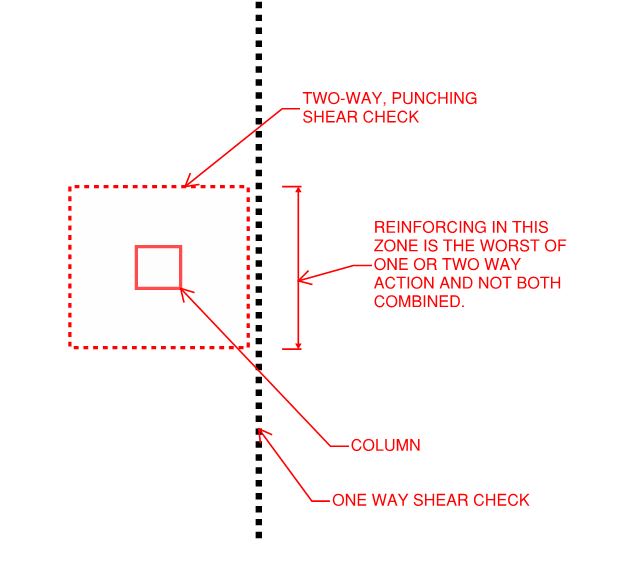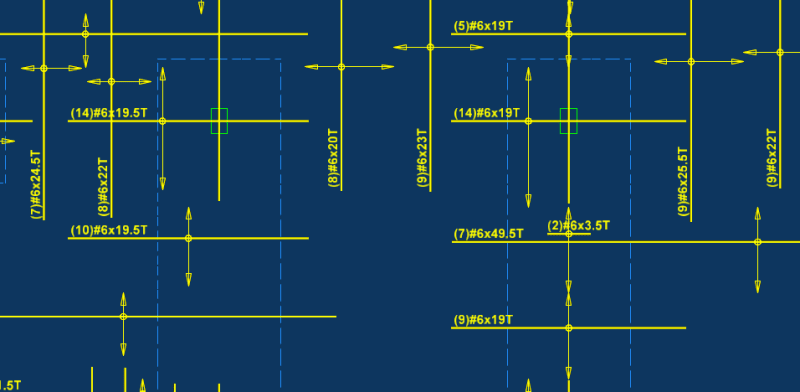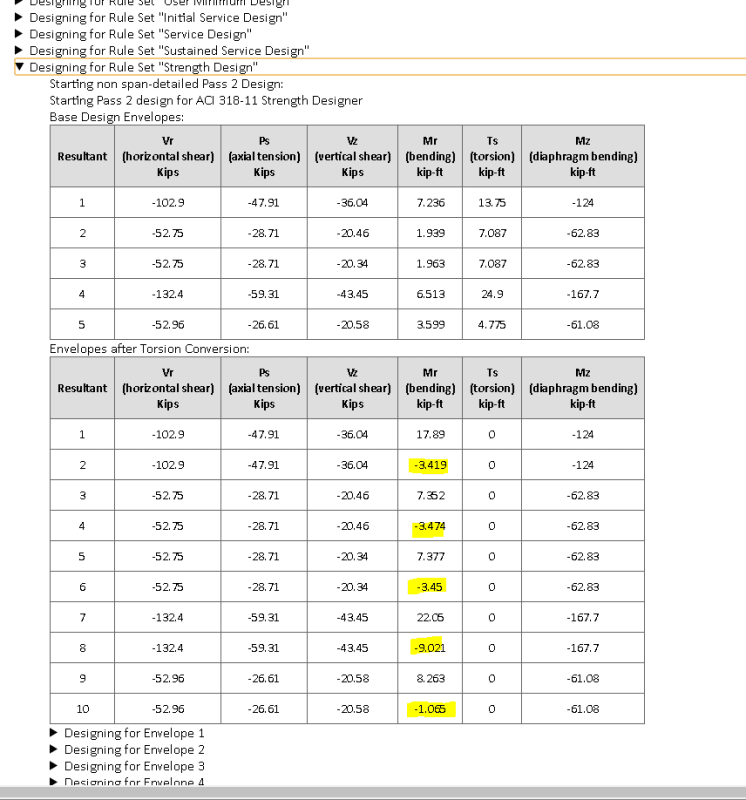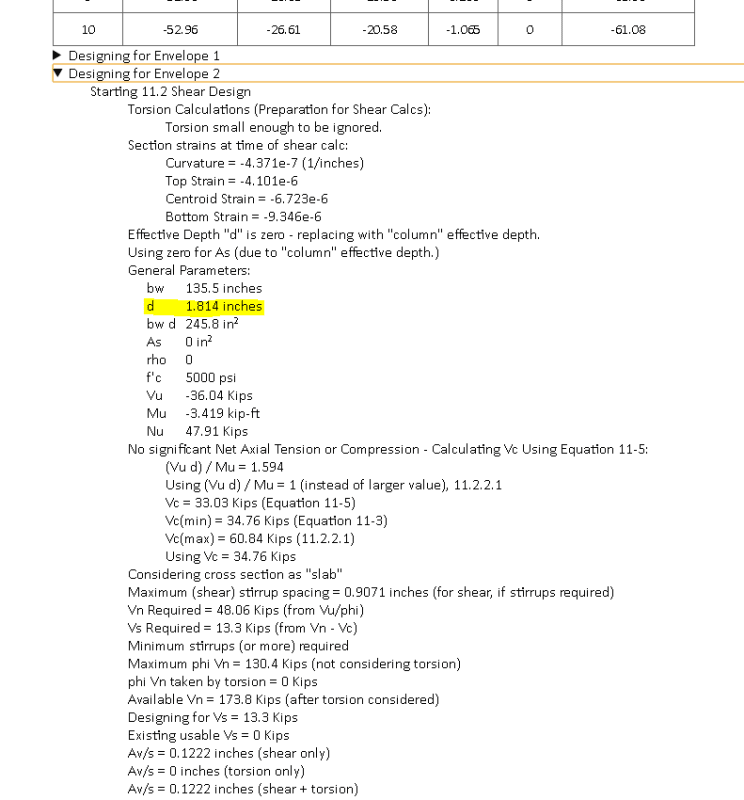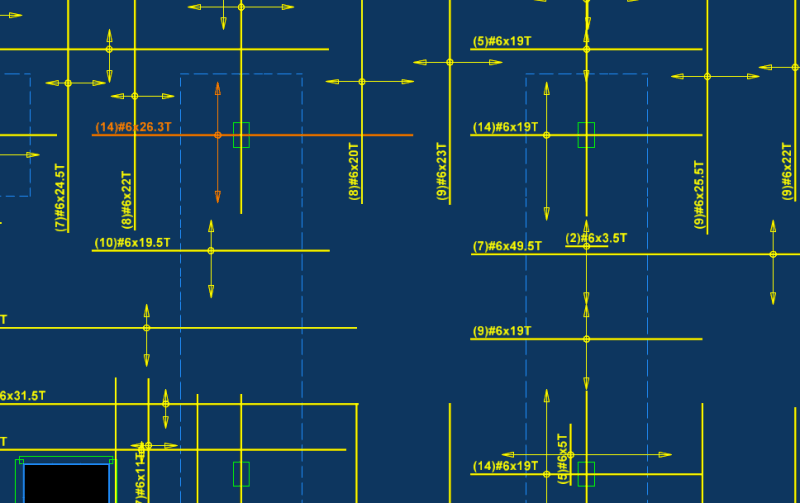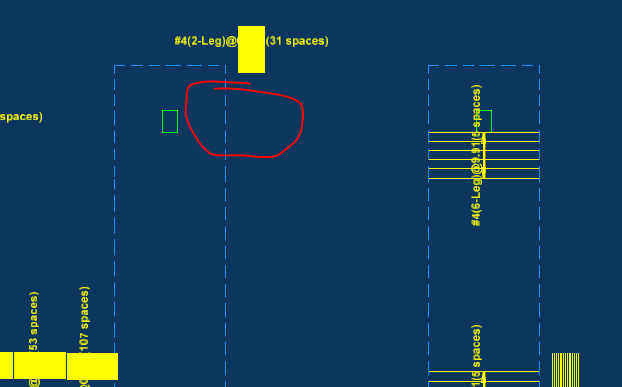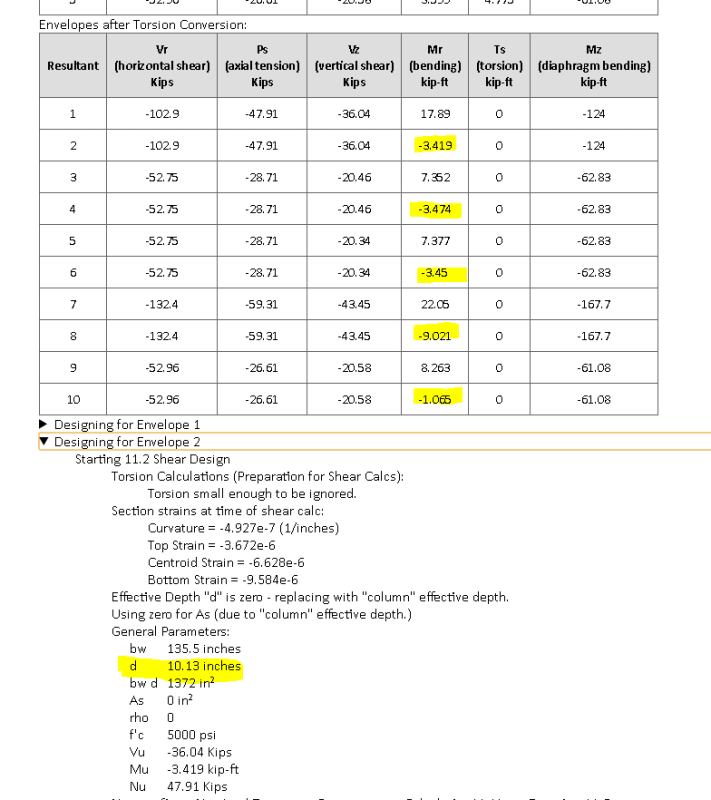I'm designing a transfer slab with no drop panels and I'm finding I need both one way shear and punching shear reinforcement which is something I never encountered before. I normally provide drop panels to avoid needing punching shear reinforcement altogether and so I just have one way/beam shear reinforcement in the column strips in a few isolated areas. We have a number of challenges on this project with head clearances and long below slab drainage runs which has meant drop panels were discounted early in the design process. Increasing the slab thickness is not really an option I'd like to consider as the slab is performing adequately in flexure and long-term deflections after the attachment of partitions are well with the L/480 limits. Increasing the concrete strength from 6 to 8ksi will only increase the shear strength by 15% which doesn't help either.
My thoughts are:
1. Increase column sizes or provide a column capital to avoid need punching shear reinforcement and then design for one way shear reinforcement only. This will result in some large column sizes which could impact parking spaces. I'm also not sure if column capitals are commonly done anymore (I'm in the N.E. U.S.).
2. Design/detail the slab for punching shear and account for this reinforcement when calculating the Vs for one way shear reinforcement.
Just gauging what others have done in this situation.
My thoughts are:
1. Increase column sizes or provide a column capital to avoid need punching shear reinforcement and then design for one way shear reinforcement only. This will result in some large column sizes which could impact parking spaces. I'm also not sure if column capitals are commonly done anymore (I'm in the N.E. U.S.).
2. Design/detail the slab for punching shear and account for this reinforcement when calculating the Vs for one way shear reinforcement.
Just gauging what others have done in this situation.

